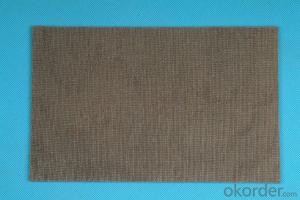Plywood, a versatile and widely used material, has been a staple in construction, furniture making, and various other industries for decades. Its popularity can be attributed to its strength, durability, and affordability. One aspect of plywood that often catches people’s attention is its weight. The weight of plywood is an essential factor to consider when working with this material, as it can impact the ease of handling, transportation, and overall project costs. In this article, we will delve into the weight of 3/4 plywood, its significance, and how it varies depending on the type and quality of the plywood.
Understanding Plywood Weight
Plywood is made from thin layers of wood veneer, known as plies, which are glued together under heat and pressure. The weight of plywood is determined by the number of plies, the type of wood used, and the adhesives applied during the manufacturing process. The standard thickness for plywood is 3/4 of an inch, which is equivalent to 18.5 millimeters. This thickness is a common choice for various applications, including flooring, cabinetry, and shelving.
The Heft of 3/4 Plywood
The weight of 3/4 plywood can vary significantly depending on the species of wood used and the quality of the plywood. For instance, hardwood plywood, such as oak or maple, will be heavier than softwood plywood, like pine or fir. The weight can also be influenced by the density of the wood and the manufacturing process. High-quality plywood will have a more consistent weight, while lower-quality plywood may have some variations.
Factors Affecting Plywood Weight
Several factors can affect the weight of 3/4 plywood, including:
1. Species of Wood: Different wood species have different densities, which directly impact the weight of the plywood. Hardwoods are generally denser and heavier than softwoods.
2. Grade of Plywood: The grade of plywood refers to the quality of the wood veneer and the manufacturing process. Higher-grade plywood will have a more consistent weight and fewer defects.
3. Moisture Content: The moisture content of the wood can also affect the weight of the plywood. Plywood with a higher moisture content will be heavier than plywood with a lower moisture content.
4. Adhesives Used: The type and amount of adhesives used during the manufacturing process can influence the weight of the plywood. Some adhesives may add more weight than others.
Benefits of Knowing Plywood Weight
Knowing the weight of 3/4 plywood can provide several benefits, such as:
1. Ease of Handling: Understanding the weight of the plywood can help you determine if you can handle the material on your own or if you need assistance.
2. Transportation Costs: Knowing the weight can help you estimate the transportation costs for your project, as heavier materials will generally cost more to ship.
3. Structural Design: The weight of the plywood can be a crucial factor in structural design, especially when calculating the load-bearing capacity of a structure.
4. 3/4 Plywood in Various Applications
3/4 plywood is a popular choice for a wide range of applications due to its versatility and strength. Some common uses include:
– Flooring: 3/4 plywood is often used as a subfloor in residential and commercial construction. It provides a stable and durable surface for the installation of flooring materials.
– Cabinetry: Plywood is an excellent material for building cabinets, as it is strong, stable, and can be easily cut and shaped.
– Shelving: The strength and rigidity of 3/4 plywood make it ideal for creating shelves that can support heavy loads.
– Furniture: Plywood is a popular choice for furniture construction, as it is relatively inexpensive and can be finished in various ways.
– DIY Projects: Many DIY enthusiasts prefer using plywood for their projects due to its ease of use and affordability.
Tips for Working with 3/4 Plywood
When working with 3/4 plywood, it’s essential to keep a few tips in mind to ensure a successful project:
1. Proper Handling: Always handle plywood carefully to avoid damaging the edges or surface. Use gloves and a lifting technique that minimizes strain on your back.
2. Storage: Store plywood in a dry, level area to prevent warping or damage.
3. Cutting: Use sharp tools and a steady hand when cutting plywood to ensure clean, accurate cuts.
4. Finishing: Plywood can be finished with paint, stain, or veneer, depending on the desired look and durability.
5. Safety: Always wear appropriate safety gear, such as goggles, gloves, and a dust mask, when working with plywood.
In Conclusion
The weight of 3/4 plywood is an important consideration when working with this material. By understanding the factors that affect its weight and the benefits of knowing the weight, you can make informed decisions about your projects. Whether you’re a professional contractor or a DIY enthusiast, knowing the weight of the plywood you’re using can help you plan more effectively and achieve better results. So, the next time you pick up a sheet of 3/4 plywood, take a moment to consider its heft and how it can impact your project.

